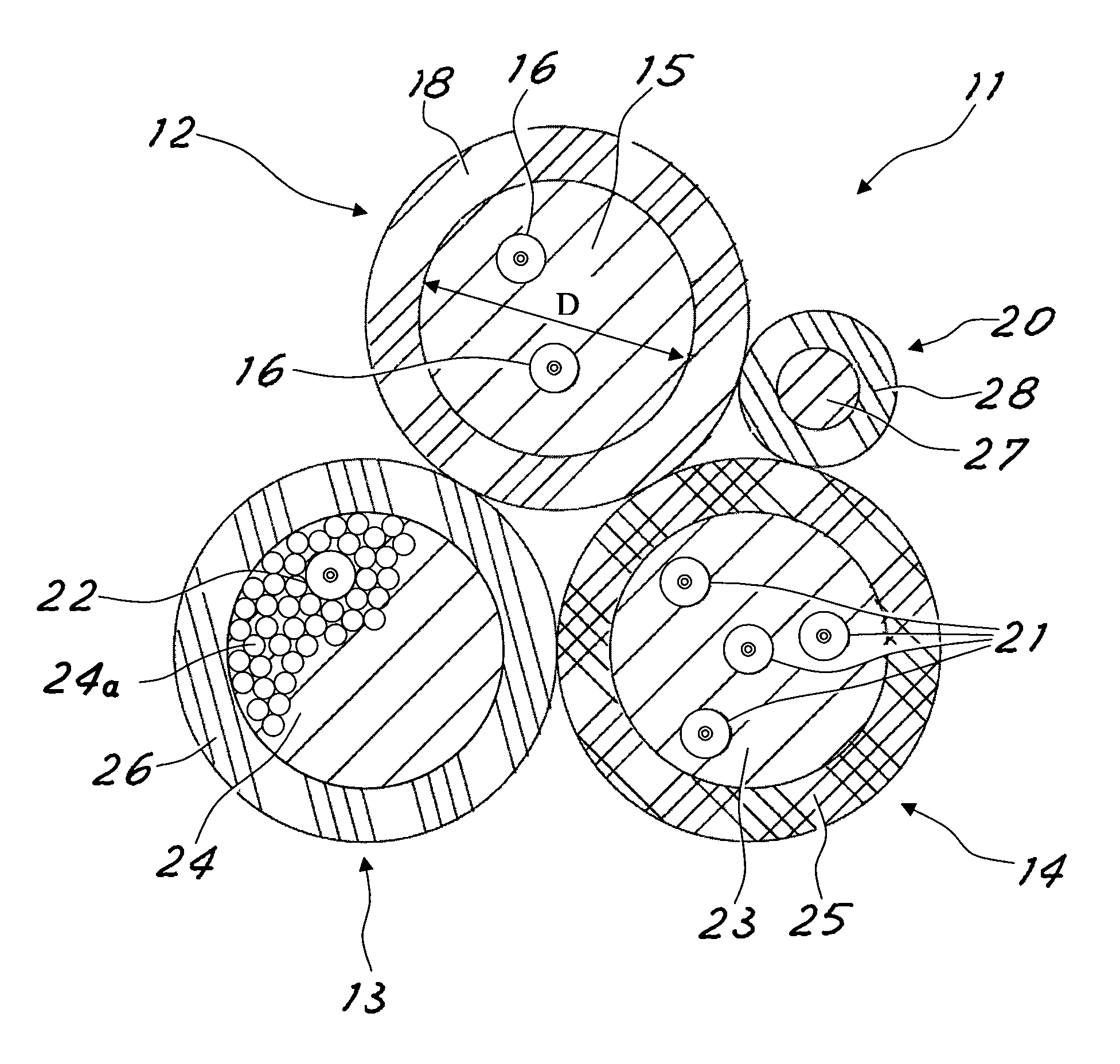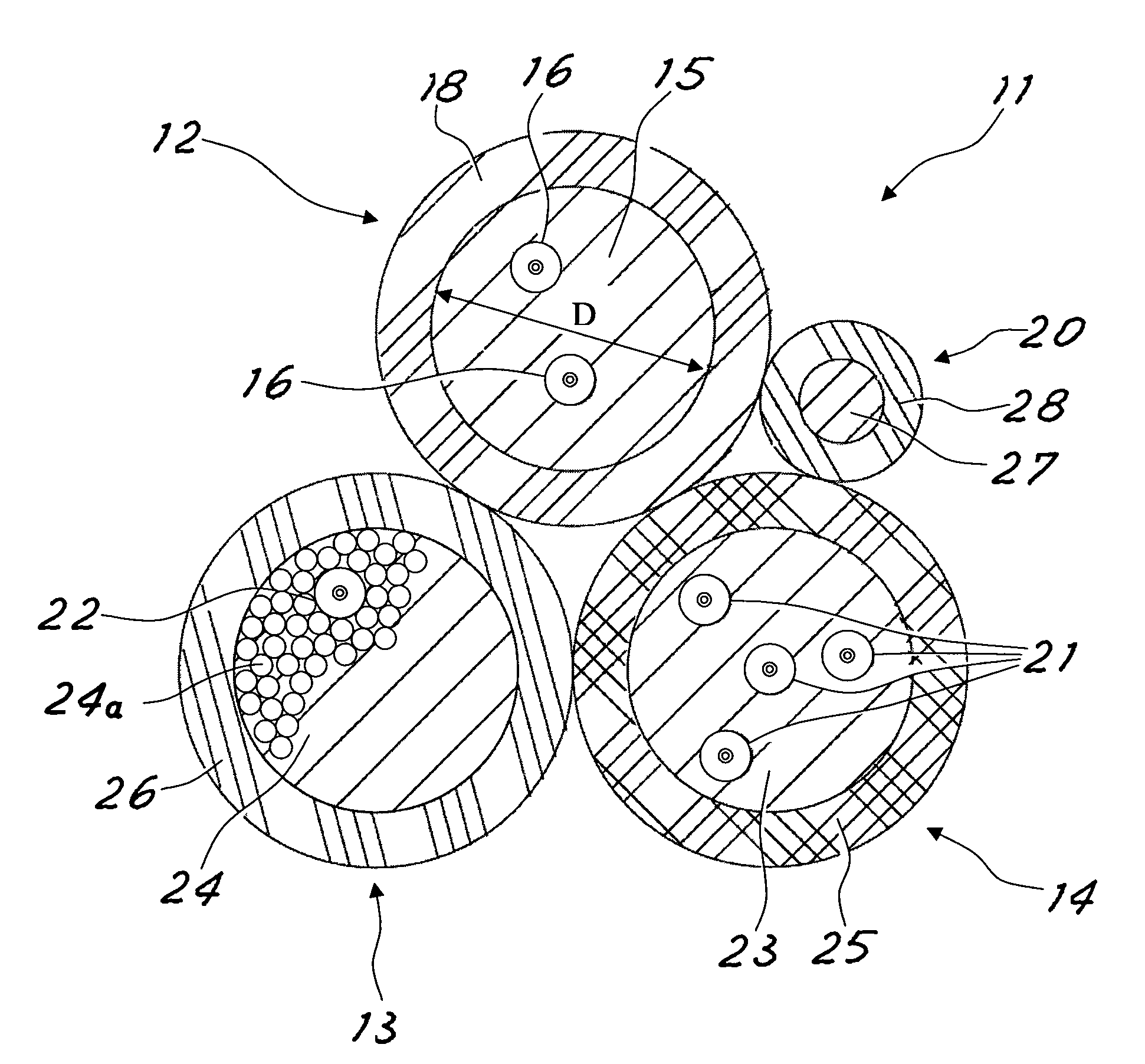Hybrid cable
a hybrid cable and cable technology, applied in the field of hybrid cables, can solve the problems of increasing installation costs, affectingaffecting the performance of the cable, etc., and achieves the effect of reducing the overall flexibility of the cable, reducing and increasing the diameter of the cabl
- Summary
- Abstract
- Description
- Claims
- Application Information
AI Technical Summary
Benefits of technology
Problems solved by technology
Method used
Image
Examples
example
[0042]A three-phase hybrid cable was manufactured, each hybrid phase cable having a cross-section area of 16 mm2 and being formed of 108 copper wires (having a diameter of 0.408 mm) and one optical fibre unit (having diameter of 0.9 mm).
[0043]The optical fibre unit is a tight buffer optical fibre unit, including a single mode or a multi mode optical fibre having a diameter of about 0.25 mm, said optical fibre being coated with a tight polymeric buffer coating (e.g. made from polyamide).
[0044]The wires and the optical fibre unit were bundled together with a stranding pitch of 101 mm. The diameter “D” of the bundle of wires and optical fibre unit, shown in FIG. 1, was of about 5.17 mm. The overall diameter of the phase cable, including the thickness of the insulating layer, was 7.17 mm.
[0045]The hybrid cable also comprised an additional insulated electrical conductor for operation of the cable during the night period when the power request is sensibly lower than during the day. Said a...
PUM
| Property | Measurement | Unit |
|---|---|---|
| diameter | aaaaa | aaaaa |
| diameter | aaaaa | aaaaa |
| diameter | aaaaa | aaaaa |
Abstract
Description
Claims
Application Information
 Login to View More
Login to View More - R&D
- Intellectual Property
- Life Sciences
- Materials
- Tech Scout
- Unparalleled Data Quality
- Higher Quality Content
- 60% Fewer Hallucinations
Browse by: Latest US Patents, China's latest patents, Technical Efficacy Thesaurus, Application Domain, Technology Topic, Popular Technical Reports.
© 2025 PatSnap. All rights reserved.Legal|Privacy policy|Modern Slavery Act Transparency Statement|Sitemap|About US| Contact US: help@patsnap.com


